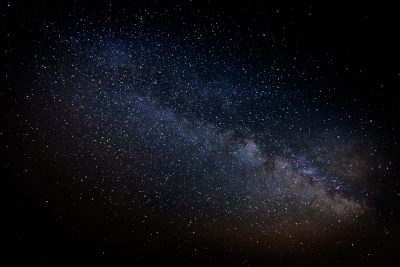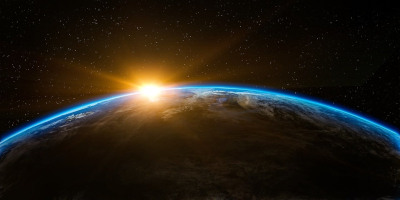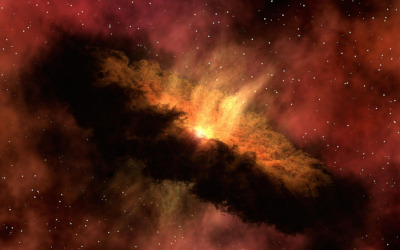
One of the best things you can do in a clear fall nights is to look up and get lost in the beauty of the night sky. With the right circumstances you will see a lot of stars and a bright smear across the sky. This is the milky way, since it looks like a smear of milk in the sky. The ancient Greeks believed that the gods spilled their milk and therefor called it “Galaxis” which originates of the Greek word for milk (γάλα).
In reality, there are just billions of stars, collected in a specific area, and of course no milk. The sun is also part of these stars swirling within the cosmic place. But not only the stars and the sun are part of it. It also includes dust and gas. If you would look at it from the top you would see a big, spinning disc. This shape is caused by the galaxy spinning around. Gravity forces it into place so that it doesn’t fly off. If you just look up in the sky you can see about 6,000 stars from earth, of course depending on the circumstances. But still, this is such a small amount if you take into an account that there are more than 20 million stars that you can’t see from our point of view.
After all, our galaxy isn’t that big and special but only a really, really small part of the universe. The whole universe consist of billions of galaxies. Andromeda Nebula, for example, is the galaxy next to ours, and approximately 2 million light years away from us. You can see that you really can get lost in the night sky. It is just incredibly huge!

How this incredible huge universe came into being is a really interesting and mind blowing question to ask yourself. That is why there are scientist watching the sky every day and why things like telescopes exists.
What scientists observed in all the years of researching and watching is that the universes move away from each other. And it goes faster every day since with the increasing distance the paste of the universes moving also increases. Because of this fact we know that in the beginning, it all started really small. According to some calculation all the universes met together 14 billion years ago. Everything we know today, the whole universe was no larger than a pinhead. Compressed and very, very hot. The beginning was a big explosion, the big bang. It has been expanding in all directions since this moment. Telescopes are measuring the expansion of the Universe every day to get a better understanding of the duration and the extent of it.

But let’s go back to the big bang. There is a lot of math behind the big bang theory and it is not an easy thing to explain as you probably imagine. Albert Einstein’s general theory of relativity plays a huge role in it as well as all the other standard theories that are existing about this topic. Even though I talked about a big explosion that is not quite the correct way to say it. It is more of an expansion than a powerful blast. The small ball of energy and matter, what would be our universe in the future, and what I described as very compressed and hot, eventually cooled. The tiny particles flying around due to the explosion were molded together and combined to form the building blocks of atoms. In a few seconds, the smallest particle of an element that forms all matter in universe come into existence as these building blocks combined. But only about 300.000 years after this, as everything cooled down even more, the very fist complete atoms were formed. As the universe continued to cool down it was possible for more elements to form. The very first ones were hydrogen and helium.
Then it just took some time. More and more atoms could join together and form more and more elements. Over thousands of years, they formed the stars and the galaxies- just like the Milky Way!
Now you know that it is not just a smear of milk in the night sky, but that it is the Milky Way. Hopefully, you also got a better understanding of what it is and how our galaxy and the whole universe came into being. Keep your head in the stars and your feet on the ground.
sources:
https://www.planet-schule.de/mm/die-erde/Barrierefrei/pages/Was_ist_die_Milchstrasse.html (planet schule, 08.11.2022)
https://www.amnh.org/explore/ology/astronomy/the-milky-way-galaxy2 (American museum of natural history, 08.11.2022)
https://study.com/academy/lesson/big-bang-theory-lesson-for-kids-definition-facts-timeline.html (Lindsy Frazer, 08.11.2022)
https://www.twinkl.gr/teaching-wiki/big-bang (twinkl editors, 08.11.2022)

